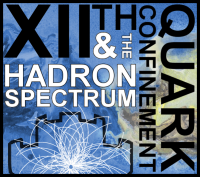Speaker
Description
Formation of color flux tubes (or quark-gluon strings), at very early stages of hadron- hadron collision, and the following hadronization, is the common general concept used by various event-generators of multiparticle production. The mechanisms of strings formation might be different (in soft and hard processes), however, the common feature in all model approaches is the number of strings and the relevant string density that might be formed in a collision. The last one may be the important factor responsible for any collectivity effects in the wide region of hadron collisions energy from SPS to RHIC and LHC .
In case of sufficiently high densities these strings may overlap and interact, for example by repelling or attracting each other, thus producing noticeable azimuthal long-range correlations (flows). This approach leads also to other manifestations of collectivity in strong correlation of the event mean transvers momenta <pT> with charged particles multiplicity (Nch) and relevant color reconnection effects, the increase of strange particles and heavy mesons yields in case of string fusion , including the long-range rapidity correlations involving heavy flavors.
We compare three independent estimates of number of such kind of particle emitting sources that may be produced in pp collisions. This includes string percolation model based on RHIC data analysis, the multipomeron exchange model with string fusion phenomenon , and MPI from PYTHIA with color reconnection. We show that high density effects from Pb-Pb down to pp collisions may play an important role in the formation of particle flows of different harmonics thus providing the initial conditions of the system evolution.
This work is supported by the Russian Science Foundation, GRANT 16-12-10176
